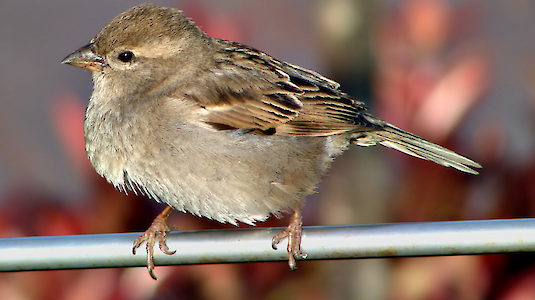Biodiversity - wildlife conservation around the building
New construction - renovation - climate protection and species conservation on the building? Now it's time to get wild!
Extensive or intensive greening can create valuable habitats for animals and plants - even in the city. In this article we want to focus on the animal inhabitants of buildings.
Perhaps you are now asking yourself the question - Why animals in our neighbourhood? Among others, here you can find one answer: "The greater the diversity of birds in our environment, the happier we are".
Self-built or prefabricated - peaceful coexistence is possible!
On the roof, in the roof, roof truss, gutter, under the eaves sheet, cornices, gaps in the walls or on the wall etc., animals accompany us and live with us! No matter whether in rural or urban areas. Sparrows (house sparrows), swifts, swallows or even birds of prey like the kestrel use man-made structures as their habitat.
If you let them, they will find their favourite places! Whereby the protection of natural habitats must have top priority. A cavity-rich old tree cannot be replaced by a nesting box and also provides a habitat for other animals. However, you can support them and ensure more successful breeding with nesting aids. You can find an all-round view here at Birdlife.at.
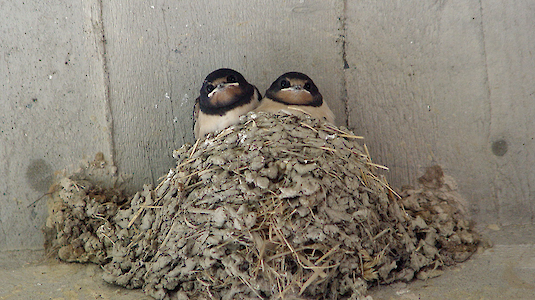
A barn swallow's nest consists of thousands of lumps of soil, water, saliva and raw water.
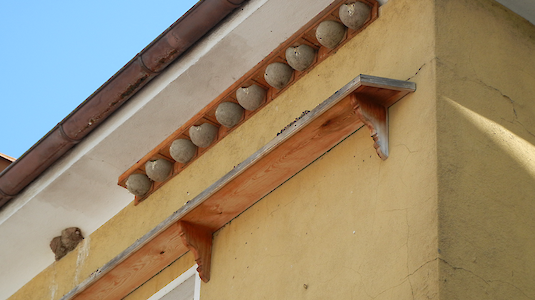
You can also do something for swallows. Here, a mixture of plaster and wood shavings is a suitable building material. There are various suppliers of artificial nests, but mostly a wooden concrete is used. Worries about damage to the facade can be prevented with simple aids (droppings boards). The picture shows House Martin nests, on the left side of the picture two natural nests.
Problem: Glass surfaces
An important and underestimated topic are glass surfaces. For reasons of light conditions in the house as well as aesthetic demands, large-scale glazing is used in residential construction. This can have serious consequences for our feathered co-inhabitants. Due to the reflections of the surrounding structure or the view of a supposedly "safe" passage, birds crash into the panes.
Reflective glass fronts can be deadly for birds.
This can be prevented! It is best to take this aspect into account at the planning stage. Where glass surfaces are unavoidable, use "bird-proof" glass that is frosted, textured or patterned by sandblasting. Wide stripes spaced as close as possible are particularly effective. Here is an insight into the possibilities of safe glass surfaces.
- https://www.birdlife.at/page/vogelschutz-ums-haus
- https://wua-wien.at/naturschutz-und-stadtoekologie/vogelanprall-an-glasflaechen/vogelanprall-an-glasflaechen
- https://vogelglas.vogelwarte.ch/
knock - knock! Problems with woodpeckers
They are most often heard in spring, although the significant drumming can be heard all year round. Sometimes, or more and more often, the knocking seems to come from the walls of houses. Reports of "confused" woodpeckers are no longer rare. Facades, wooden beams or wood panelling are used, mostly by spotted woodpeckers. This is most common in houses that are close to forests or larger tree stands and have a thermal insulation facade.
"These sound to woodpeckers like easily worked tree trunks: the thin plastering resembles bark and the insulating material made of polystyrene or mineral wool resembles rotten wood. Preferred points of attack are the edges of the house or the area around the windows. The softer and rougher the plaster, the better woodpeckers can cling to it, the thinner it is, the easier it is to work on" writes Birdlife Austria in their brochure "Woodpecker Damage to Buildings".
Here is a video of the great spotted woodpecker at work: https://www.youtube.com/watch?v=VOY414pOE4E
What to do?
From garlands made from old PET bottles, windmills or adapting house cleaning. There are many possibilities and depending on the choice, they can provide quick or long-term help! Please refrain from using slackly hanging nets, these are veritable bird traps and can lead to starvation / cold death. A very effective remedy, but with a longer waiting time, is greening the facade! Maybe you should read up again :)
By far the best remedy against the woodpecker on the facade is to maintain a stand of old trees in the vicinity.
For as Wilhelm Busch once said, "Alte Bäume behämmert der Specht am meisten."
Creatures of the night
Bats have been with us humans for a long time. Unfortunately, many myths still persist about the only active flying mammals. Yet there are only three species in Central and South America that feed on blood, out of a total of 1428(!) species. "Our" bats are pure insect hunters and inhabit man-made structures, among other things.
Bats have a complex way of life with temporally and spatially separated habitats. In winter, they need constant temperature and disturbance-free spaces. In our latitudes, the so-called wintering grounds are usually found in caves, tunnels, trees or even in wood piles and on buildings. The summer grounds are found in and on buildings (attics, but also crevice roosts) and other objects (e.g. bridges) as well as in and on trees. The so-called nursery roosts are used by the females for rearing their young.
Two grey long-eared bats smile at the camera.
The main problems for bats on buildings are:
Closure of various entrances to buildings
Light sources at the entrance and exit openings
Renovations without consultation with experts (time factor often important)
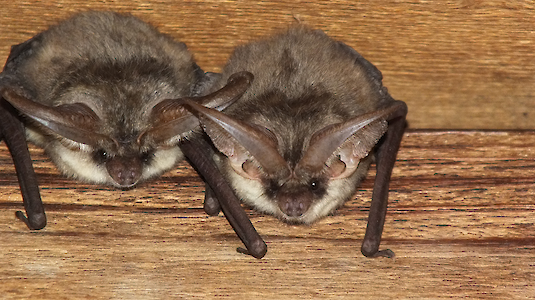
Such grids can become deadly traps in the attic.
How to protect?
To ensure long-term protection, protection strategies for the individual habitat elements are necessary:
- Protection of roosts (summer, winter and intermediate roosts).
- Protect hunting grounds and the connections between roosts and hunting grounds
- Refrain from using poisons (insecticides, herbicides, wood preservatives) in the home, garden, agriculture and forestry
- Do not use outdoor lighting at night
Like birds, some bat species can be supported with boxes. Whether homemade or purchased.
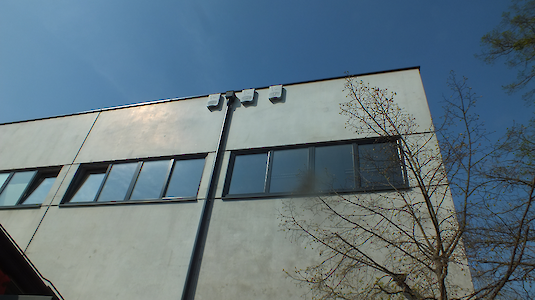
Discreet and effective - bat boxes.
More info about bats in Austria can be found at KFFÖ.
Sources & information:
Malte Joost, geo.de. https://www.geo.de/natur/tierwelt/23734-rtkl-artenvielfalt-warum-uns-voegel-so-gluecklich-machen-wie-geld
Birdlife Austria. https://www.birdlife.at/page/homepage
Birdglass.
https://www.birdlife.at/page/vogelschutz-ums-haus
https://vogelglas.vogelwarte.ch/
https://wua-wien.at/naturschutz-und-stadtoekologie/baumassnahmen-fuer-wildtiere
Woodpecker damage to buildings. https://www.birdlife.at/page/vogelschutz-ums-haus
KFFÖ - Bat Protection Austria. http://www.fledermausschutz.at/start.htm
